I’m glad the plumbing maintenance issue caused us to leave Prague a day early. On our way to Karlovy Vary we took time to stop at Terezin … a place I will always remember.
Theresienstadt
My high school WWII studies included mention of the concentration camps. I learned the names of a few camps … Auschwitz, Dachau. But, of course, there were thousands of camps … each with a story that must be told.
We left Prague and traveled for an hour (62 km, 38 miles) to Terezin. Google Maps took us to Theresienstadt, originally a fortress built by Emperor Joseph II of Austria in the late 18th century. 1
In 1940, the Gestapo was ordered to turn the fortress into a concentration camp.
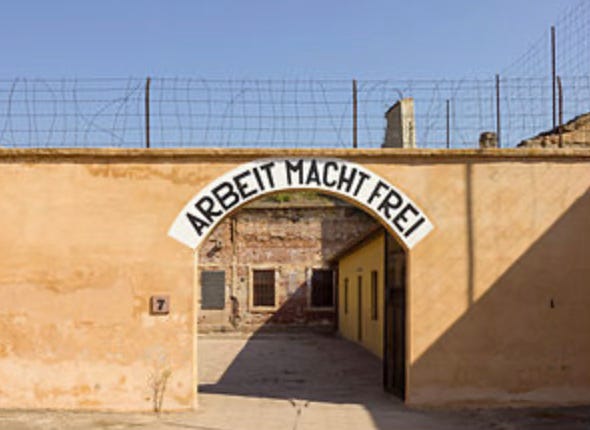
More than 150,000 Jews (primarily from Czechoslovakia, Germany, and Austria) were sent there, along with hundreds from the Netherlands and Denmark. There they were held for months or years before being sent by rail to Auschwitz or Treblinka extermination camps.
After visiting the fortress, we traveled a few kilometers into the town of Terezin. As the population of prisoners increased, they spilled over into a ghetto inside the city. There, you will find several museums that tell the unique story of this camp and ghetto.
Operation Embellishment
Scholars, scientists, artists, and musicians were “detained” in Terezin. Many had earned international acclaim, including the composer Rafael Schächter, movie director, and actor Kurt Gerron. In 1943, the king of Denmark demanded to visit the camp where 466 Danish Jews had been sent. This led to Operation Embellishment, a program to beautify sections of the camp. While detainees typically lived in cramped dormitories, the Nazis created painted dorm rooms with only 3 prisoners. They built fake shops and cafes to suggest that the Jews lived in relative comfort. They accelerated the deportation of Jews to Auschwitz to reduce the appearance of overcrowding.
In 1943, an inspection team that included two Swiss delegates from the International Red Cross and two government representatives from Denmark visited Terezin. Adolf Eichmann led them on a carefully orchestrated tour.
As part of the charade, the Nazis compelled Schächter to give a performance of the Requiem. … the Red Cross issued “a bland report about the visit, indicating that the representatives were taken in by the elaborate fiction.” Eichmann was later quoted as having said, “Those crazy Jews—singing their own requiem.” Rafael Schächter was deported to Auschwitz on October 16, 1944, and died the following day in the gas chamber. — Terezin.org
The visit was such a success that the Nazis decided to make a propaganda film there. Kurt Gerron was enlisted to direct the movie. After 12 days of shooting the director and the actors were sent to their death in Auschwitz.
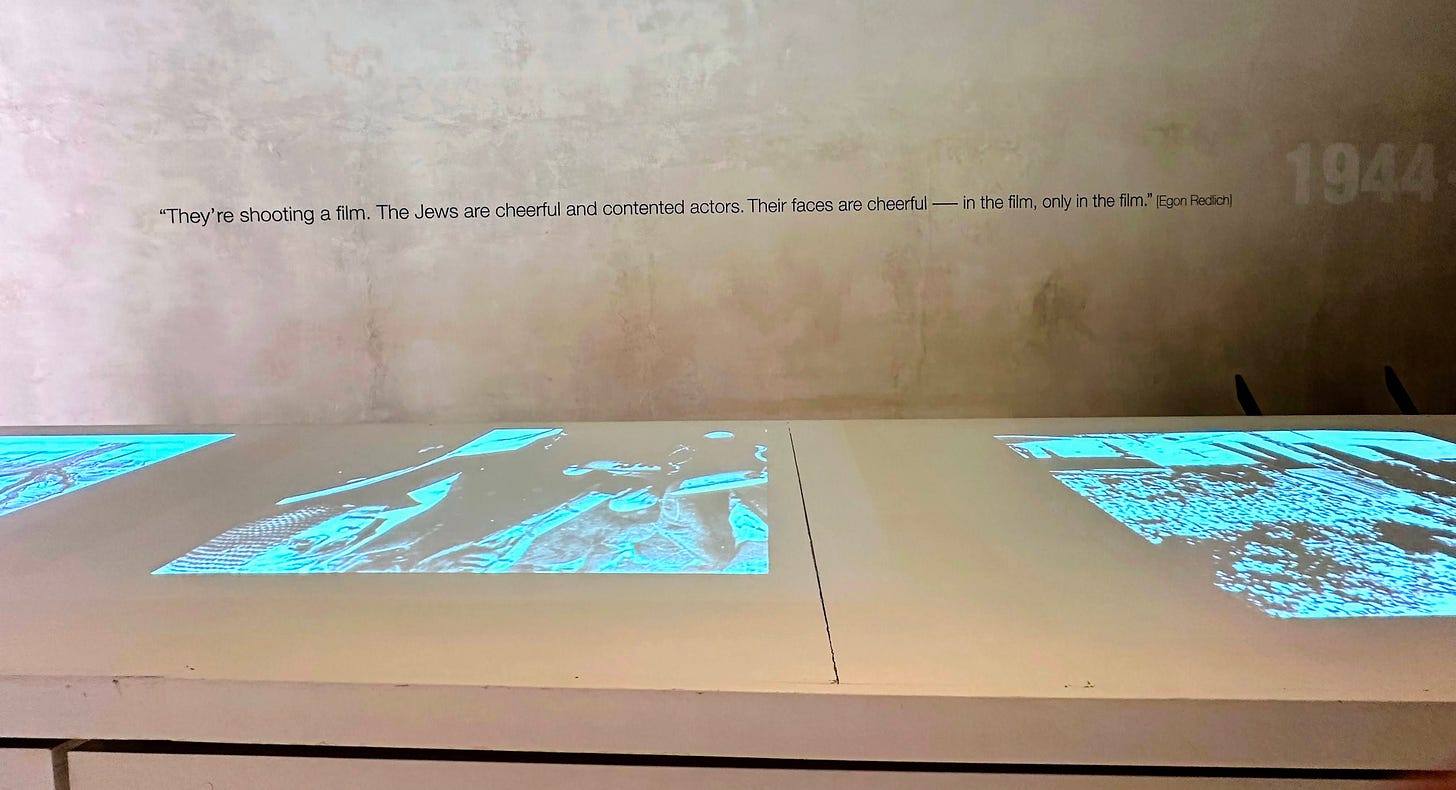
Never Forget
It is estimated that more than 150,000 were sent to Terezin. While Terezin was not an official extermination camp, over 33,000 died in the camp due to malnutrition, physical abuse, and diseases spread through the cramped quarters. Another 88,000 were sent to extermination camps. When the camp was liberated on 9 May 1945 there were 17,247 survivors. Of the 15,000 children sent to Terezin, less than 150 survived.
Na próxima semana, Berlim depois da guerra…tchau
Nanc
If you visit Terezin stop at the fortress first and purchase a ticket. The ticket is good for the entire day and allows you to enter the fortress and the many museums in town.

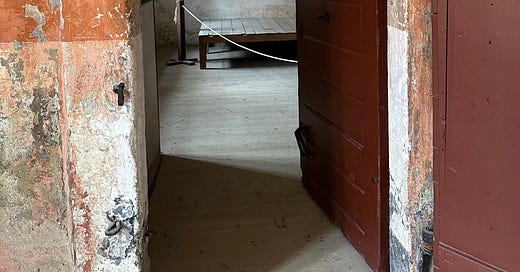



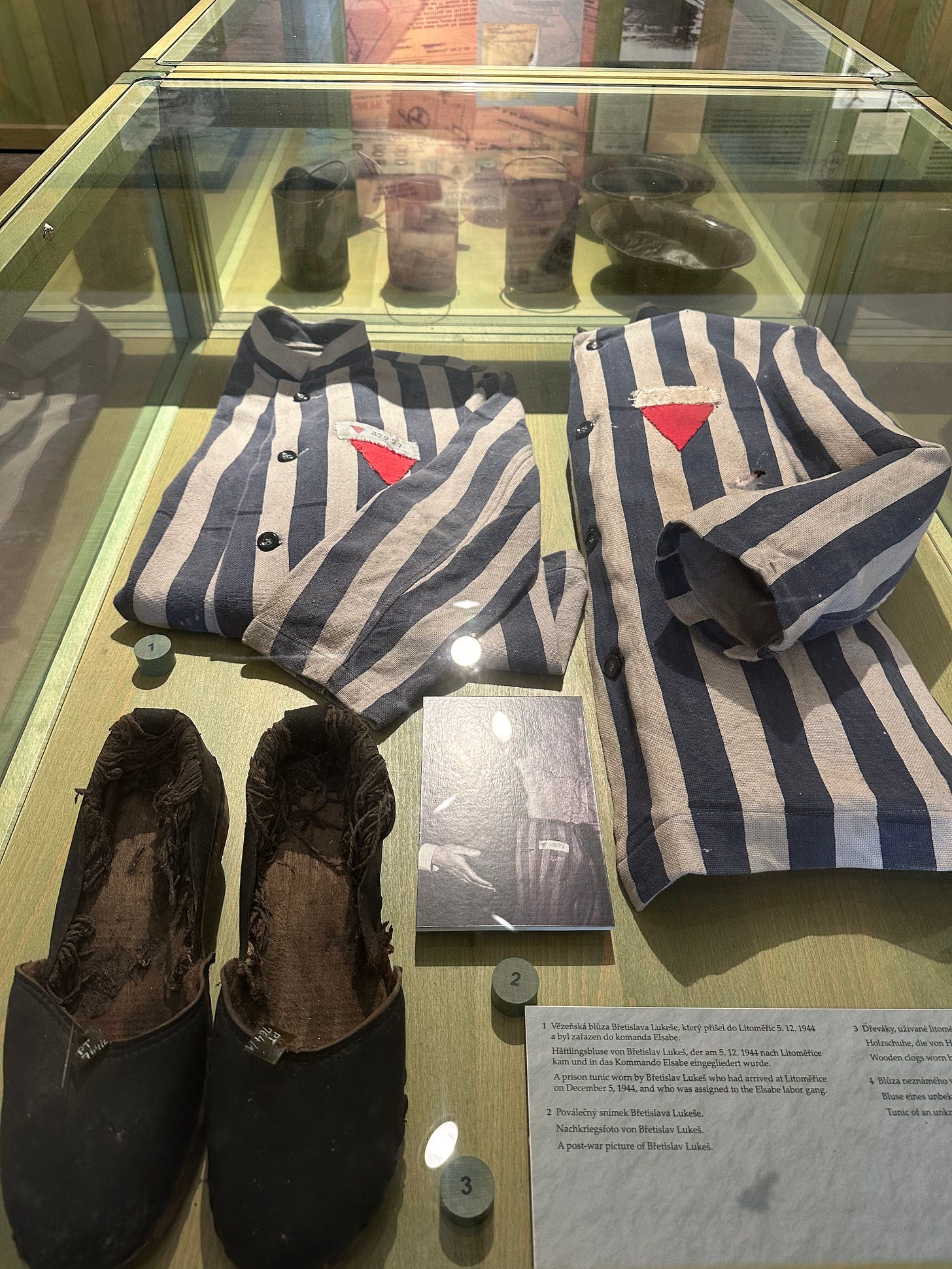
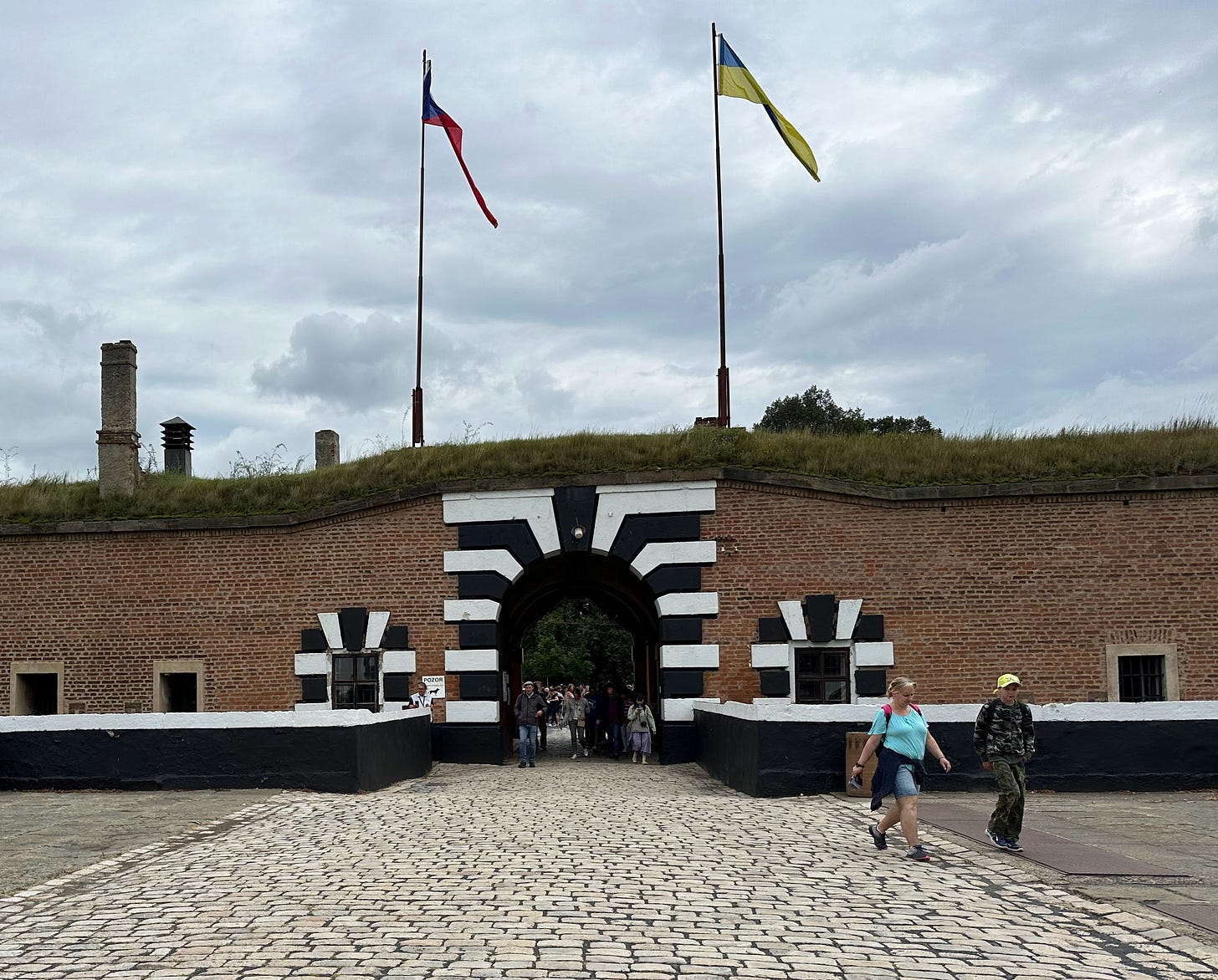
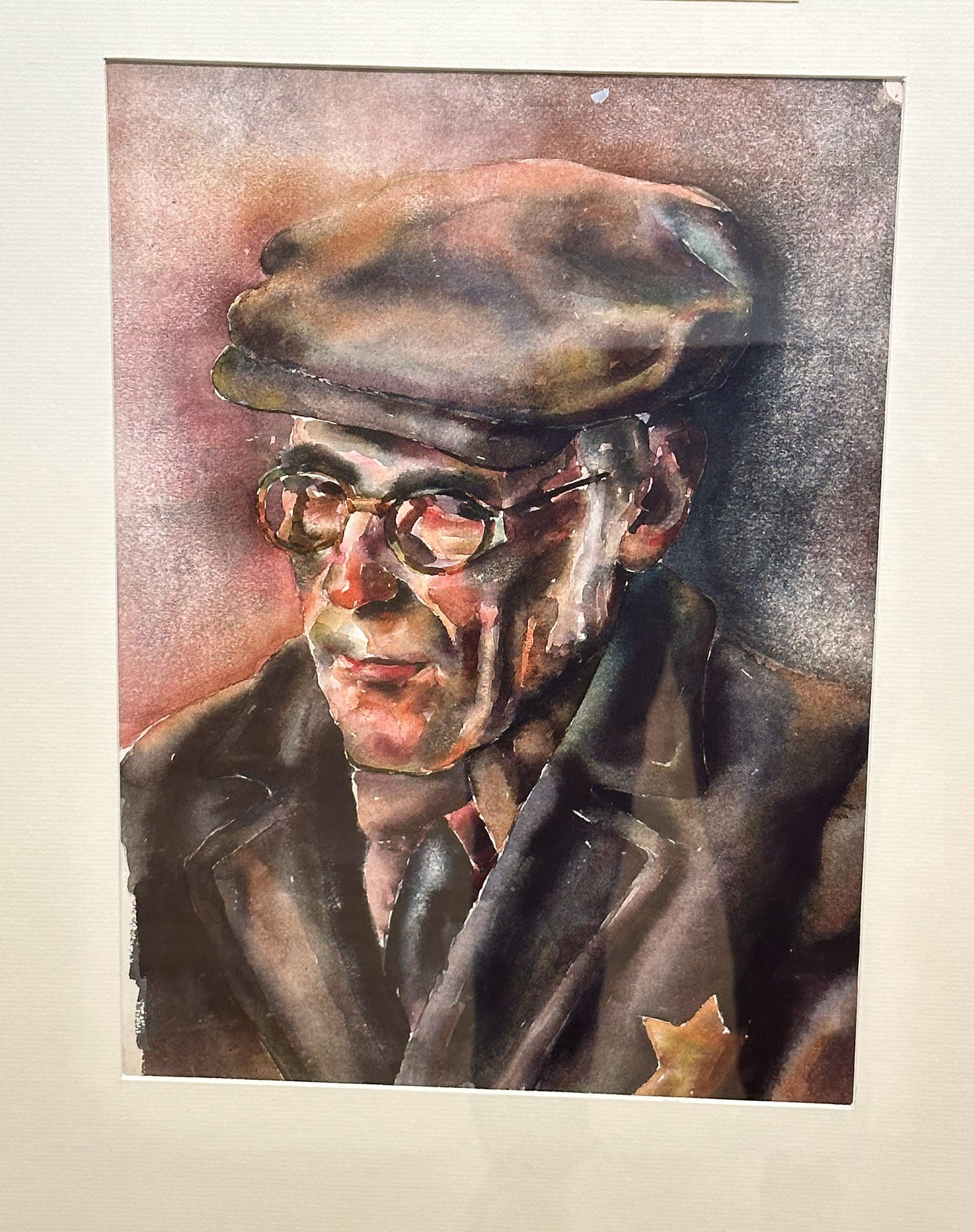
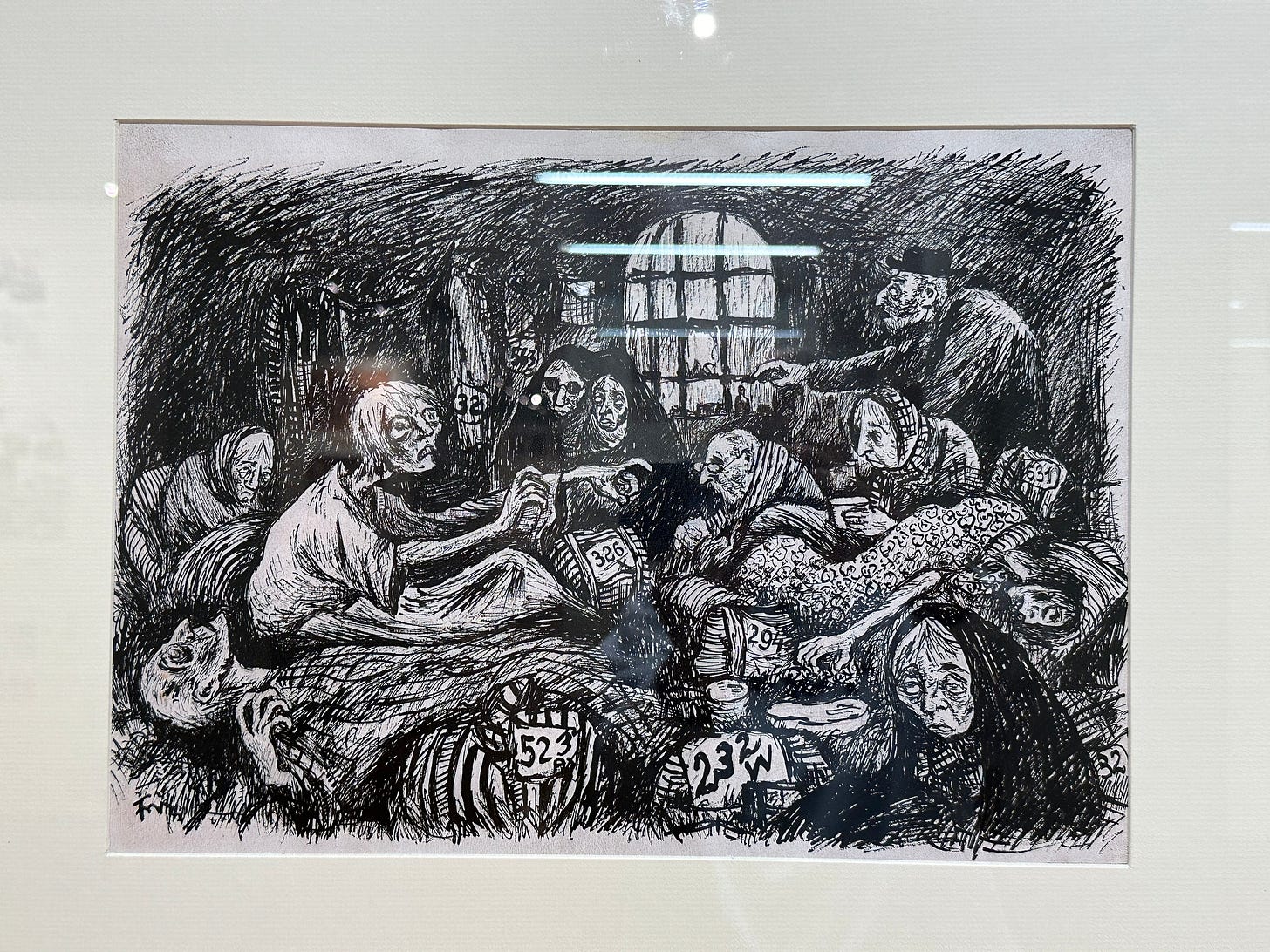
A bittersweet experience no doubt from the intrepid duo. Thanks for highlighting the human shadow aspect we must forever acknowledge and work to bring into the light.
How sad that we forget what happened, we must never forget, because man is stupid enough to let it happen again and cry I didn’t know.